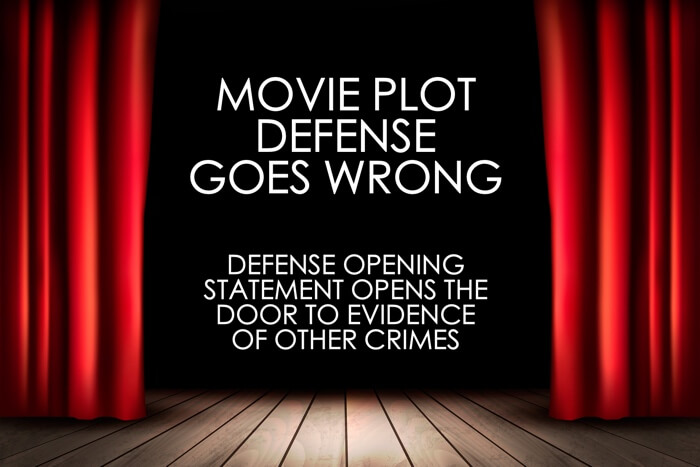
In State v. Munzanreder, the WA Court of Appeals held that the jury selection process used by the trial court – which included a written questionnaire with a number of questions regarding exposure to media reports and questioning each juror individually about media exposure – protected the defendant’s constitutional rights to an impartial venue. Therefore, the trial court did not abuse its discretion when it denied the motion to change venue.
BACKGROUND FACTS
John J. Munzanreder appealed his conviction for the first degree murder of his wife. Because of the sensational nature of the alleged crime, local media extensively covered his case from arrest through trial.
Munzanreder worked with Juan Ibanez at Valley Ford in Yakima, Washington. In
early February 2013, Ibanez approached Munzanreder and asked him for money for a
toolbox. Munzanreder agreed to give him the money ifhe helped get rid of somebody.
Munzanreder told Ibanez that he wanted help killing his wife, Cynthia, and would give
him $20,000. Ibanez said he would help, but he would not kill her.
Munzanreder gave Ibanez cash and directed him to purchase a gun. Munzanreder
told Ibanez his plan: Munzanreder and his wife would go the movies, he would shoot her
with the new gun, he would then throw the gun to Ibanez in some nearby bushes, and
Ibanez would run away with the gun.
On February 28, 2013, the Munzanreders went to see a movie at the Majestic
Theater in Union Gap, Washington, a small city immediately south of Yakima. Ibanez received a prearranged text message from Munzanreder that the plan would be executed
and went to the theater and waited in the bushes adjacent to the theater’s parking lot.
After the movie, as the couple approached their car, Munzanreder shot his wife with the
gun purchased by Ibanez. Munzanreder then threw the gun into the bushes where Ibanez
waited. As Ibanez left the scene with the gun, he ran past a couple near his car.
Law enforcement arrived and questioned witnesses. Munzanreder told law
enforcement he heard a shot and saw a man in black clothes running away. Munzanreder
said he had followed the man, but fell and injured himself, developing a black eye.
Munzanreder’s wife later died from her injuries.
Law enforcement continued to investigate. They interviewed Ibanez, whose car
had been reported at the crime scene. Ibanez quickly confessed and told law enforcement
of the details of the crime. Media coverage of both the murder and the arrests quickly
saturated Yakima County.
Munzanreder was charged with Murder in the First Degree. The State also sought a Deadly Weapon Enhancement because the crime occurred with a handgun.
The Jury Questionnairre
Defense counsel and the State had worked together to create an agreed juror
questionnaire. The purpose of the questionnaire was to uncover juror bias, so that the
trial court and the parties could individually interview venire jurors with possible bias in
open court but outside the presence of other venire jurors.
The questionnaire contained many questions, including questions focusing on
pretrial publicity about the case. Those questions asked the venire jurors to list media
sources they used, whether they generally believed the media, whether they thought the
media was fair to both sides of a case, and what criminal cases they followed in the
media. It also specifically asked about Munzanreder’s case. The questionnaire asked
venire jurors if they knew information about the case from any sources, and concluded the
section by asking if they had formed any opinions about the case. The questionnaire also
asked venire jurors if they wanted to discuss their answers separately from other jurors.
The completed questionnaires revealed that 105 of the remaining 128 venire jurors knew
about the case; of these 105, 24 had formed opinions; and of these 24, most believed
Munzanreder was guilty.
Before the remaining venire panel returned to the courtroom, Munzanreder orally
moved for a change of venue. The motion was anticipated because Munzanreder had
earlier said he would make such a motion, and had provided the trial court and the State
with copies of local media stories and media Facebook posts.
The State, although opposing Munzanreder’s motion, indicated the trial court might give additional peremptory challenges. Munzanreder responded that he might ask for additional peremptory challenges, but would not do so until after the court ruled on his motion. The trial court took the motion under advisement and said it would make its ruling later in the jury selection process.
The parties completed voir dire and then went through the process of selecting the
Jury. The trial court permitted each party 6 peremptory challenges for the first 12 jurors,
and 1 additional peremptory challenge for each of the 3 alternate jurors. Munzanreder
never asked for additional peremptory challenges.
The panel was sworn in. The trial court provided the panel various preliminary
instructions and then excused them for lunch. With the panel excused, the trial court gave
its oral ruling denying Munzanreder’s motion to change venue.
Over the next several days, the parties presented their evidence.
The jury returned a guilty verdict on 1st degree murder with a firearm
enhancement. The trial court sentenced Munzanreder to 340 months of incarceration.
Munzanreder timely appealed. His principal arguments on appeal are the trial court abused its discretion when it denied his motion to change venue, and the voir dire process used by the trial court failed to protect his constitutional right to an impartial jury.
COURT’S ANALYSIS & CONCLUSIONS
First, the Court applied a Gunwall analysis to determine if the Washington Constitution provides greater protection than the United States Constitution in a particular context. A Gunwall analysis must be performed, if litigants want the court to consider whether a parallel constitutional provision affords differing protections.
Here, the Court found that Munzanreder’s state constitutional right to an impartial jury should be interpreted as providing the same degree of protection as the parallel federal constitutional right. The Court similarly held that article I, section 22 of the WA Constitution’s right to an impartial jury does not provide any more protection than the Sixth Amendment.
Second, the Court of Appeals raised and dismissed Munzanreder’s arguments that the voir dire process employed in his case was insufficient. It reasoned that under Lopez-Stayer v.
Pitts, a trial court has considerable discretion in conducting voir dire. Abuse of discretion occurs when a trial court bases its decision on untenable grounds or untenable reasons.
Here, the Court of Appeals discussed how extensive and meticulous jury selection was in this case. The trial court summoned 243 potential jurors. The parties worked together to craft an extensive juror questionnaire that satisfied the State, Munzanreder, and the trial court. The trial court granted several dozen individual interviews in open court outside the presence of other venire jurors.
The trial court was fully involved with the process, and asked questions designed to expose bias and to ensure that jurors would reach a verdict based on the evidence presented at trial and on the court’s instructions on the law. Jury selection took over four days. Munzanreder did not request additional peremptory challenges, despite knowing he had that option. Munzanreder simply asserts now that the process was insufficient, although he was heavily involved at trial in developing the process used. Ultimately, the Court of Appeals decided that because Munzanreder does not show an abuse of discretion, his appeal on this issue fails.
Third, the Court of Appeals raised and dismissed Munzanreder’s arguments that the jury selection process used by the trial court was constitutionally deficient. He attempts to punctuate his point by showing that four biased jurors were empaneled. The Court reasoned that A party may challenge a juror for cause under CrR 6.4(c); and RCW 4.44.170. The trial court is in the best position to determine whether a juror can be fair and impartial because the trial court is able to observe the juror’s demeanor and evaluate the juror’s answers to determine whether the juror would be fair and impartial. For this reason, this court reviews a trial court’s denial of a challenge for cause for a manifest abuse of discretion.
Here, the Court of Appeals found no manifest abuse of discretion. Munzanreder failed to use his peremptory challenges to remove juror #51, a potentially bad and unbiased juror. He also elected not to request additional peremptory challenges. If the trial court erred in denying Munzanreder’ s for cause challenge of venire juror 51, because Munzanreder elected not to remove venire juror #51 with his allotted peremptory challenges or by requesting additional challenges, Munzanreder waived that error.
Fourth, the Court of Appeals raised and dismissed Munzanreder’s arguments that the trial court abused its discretion when it denied his motion for a change of venue. He primarily argues the pretrial media publicity was overwhelmingly inflammatory, which prejudiced the jury pool against him. The Court reasoned that in order to prevail on a change of venue motion, the defendant need only show a probability of unfairness or prejudice. Sheppard v. Maxwell, State v. Rupe. The following nonexclusive factors aid our review of whether a trial court abused its discretion in denying a change of venue motion:
“(I) the inflammatory or noninflammatory nature of the publicity; (2) the degree to which the publicity was circulated throughout the community; (3) the length of time elapsed from the dissemination of the publicity to the date of trial; (4) the care exercised and the difficulty encountered in the selection of the jury; (5) the familiarity of prospective or trial jurors with the publicity and the resultant effect upon them; (6) the challenges exercised by the defendant in selecting the jury, both peremptory and for cause; (7) the connection of government officials with the release of publicity; (8) the severity of the charge; and (9) the size of the area from which the venire is drawn.”
Here, the Court of Appeals reasoned that although the initial venire pool provided substantial challenges because of the trial court’s careful process for selecting a jury, it was highly confident that 11 of the 12 empaneled jurors were impartial.
“If venire juror #51 was biased, Munzanreder had the opportunity to remove him,” said the Court. “Munzanreder elected not to use any of his peremptory challenges to remove venire juror 51, and he did not request additional peremptory challenges. These two facts strongly suggest that even Munzanreder believed the empaneled jury was fair and impartial.” With that, the Court of Appeals concluded the trial court did not abuse its discretion when it denied Munzanreder’s motion to change venue.
Consequently, the Court of Appeals confirmed Munzanreder’s conviction.
Please contact my office if you, a friend or family member are charged with a crime. Hiring an effective and competent defense attorney is the first and best step toward justice.
















